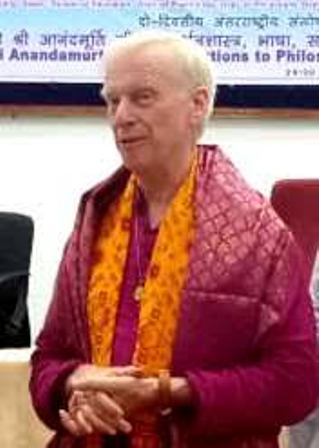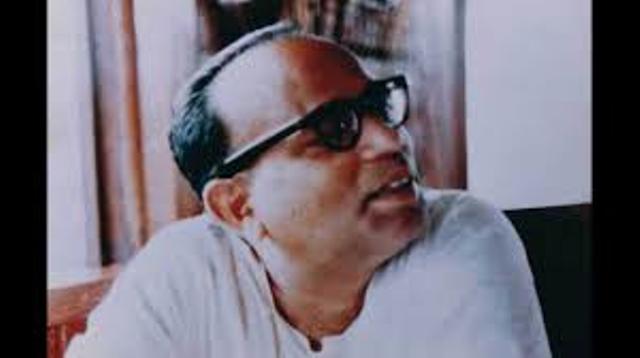Edited by Dr Steven Landau MD, FAAFP

The following was written by Shrii Prabhat Rainjan Sarkar, in a book called Human Society Part I, in which he outlines some of the principles of PROUT, the Progressive Utilization Theory, designed “for the welfare and happiness of all.” It is revolutionary in concept, yet makes good common sense, and is applicable to the current day discussions of AYUSH and its various disciplines of Ayurveda, Yoga, Unani, Siddha and Homeopathy, with respect to allopathic medicine. Please read and enjoy, and think carefully, as to why Shrii Sarkar, also known as ShriiShriiAnandamurti, Gurudeva of Ananda Marga, would trouble to write and preach about creating the ideal Human Society.
Methods of medical treatment: Current methods of medical treatment can be roughly divided into three groups.
The most common method is to fight disease with strong pills and injections. Allopathy, ayurveda and hekemii [hakims](1) can be included in this group because they use strong medicines and also poison as a medicine, although their methods of diagnosis and remedies differ. In this method of treatment the selection of medicines involves great risk, because more emphasis is placed on the indications of the disease than on those of the patient, and because of the possibility of causing death.
The great danger in diagnosing illnesses and prescribing medicines according to the germs and diseases present in the body is that it is nearly impossible to arrive at a firm conclusion about the precise nature of germs. Whether diseases are caused by germs or germs are created from diseases which are caused by other factors is a matter of controversy.
The symptoms of one disease may be identical to those of another, and the remedy for one may prove to be completely ineffective or even harmful in the case of the other. Moreover, as poisons are used, they may seriously affect the vitality of the patient. Just imagine, if the doctor is incompetent or is completely motivated by a business mentality, what will the plight of the public be?
There was a time when diagnosing illnesses and prescribing medicines were not very difficult because diagnoses were based on three constituents of the body – air, bile and phlegm – with blood as a fourth constituent. But increased physical and glandular complexity has led to a corresponding increase in the number and complexity of diseases. So to what extent can this method of diagnosis be useful to a doctor? Is it not simply guesswork to prescribe medicines for a particular disease when the medicine is prescribed for the disease but the disease is diagnosed according to the bodily constituents? If you mentioned this to an allopath, ayurvedic doctor or hakim he or she would probably hand over his or her stethoscope or mortar and pestle and reply, “Here you are, sir. You had better treat the disease yourself.” This, of course, is an angry remark. While I recognize that a lay person should not have the audacity to counsel a doctor, I must also point out that everyone has the right to consider the merits and demerits of a particular type of medical treatment.
The principles, application and philosophy of homoeopathy are completely different from the above medical treatments. Homoeopathy treats the symptoms of the patient, not the disease or its symptoms. So there is very little possibility of causing harm, even if the diagnosis is not quite correct. A doctor with good powers of observation and a subtle sense of discrimination can easily prescribe remedies according to the patient’s symptoms. Another speciality of homoeopathy is that medicines are administered in subtle doses, not in the form of strong tablets, and such doses quickly become active in the molecules of the patient’s body as well as in his or her mental sphere.
The greatest difficulty with homoeopathy is that it is based upon the subtle intellect of the doctor, and to achieve such a degree of subtlety regular, sustained effort is absolutely essential. Yet homoeopathic treatment is generally quite slack, and slackness is particularly evident in the proficiency of homoeopaths. Anybody can become a homoeopath by studying a few books. No one will object. In most countries there are no proper regulations either.
Surgery and injections are not acceptable to homoeopathic philosophy, but in certain instances the need for surgery as well as injections cannot be denied. Nowadays of course surgery is gradually being incorporated into homoeopathy. This is definitely a positive development.
Naturopaths do not believe in using medicine. They think that it is possible to cure patients through the gifts of nature only – through earth, water, light, heat and air, together with a proper diet. I do not deny that this is possible, but it is also often difficult to gradually and completely attune the body to nature. People should recognize that medicine does not cure disease, rather nature cures disease with the help of the body’s own healing power. Medicine only helps to accelerate the activity and speed of the healing process.
In cases where disease is caused by unnatural activity, I do not see the harm in using medicines to help nature. Just as earth, water and air are medicines, are not various types of medicines also prepared by selecting ingredients from nature? Of course precautions must be taken when using medicines to help the healing power of the body, to ensure that they do not cause physical side-effects or psychic disturbances. Where a person has not engaged in unnatural activity, he or she may still contract a disease due to pollution in the air, earth or water. In such cases is it possible to attune the body to nature? Furthermore, the diets and lotions prescribed by naturopaths are often very expensive and beyond the means of the poor.
Ápascavishvabheśajii [“Water is the universal remedy”]. I do not disagree with this assertion of the Rgveda. However, although I have a deep regard for various aspects of hydropathy and naturopathy, I do not see any reason to support the view that all types of medicine and surgery are harmful. Biná cikitsáyyatalok mare tárcáitebeshiilokcikitsáy mare [“More people die with medical treatment than without it”] – nor am I prepared to accept this view, because in the acute stage of an illness even very poor people get or try to get medical treatment. I do not think such views are worth commenting on.
Nevertheless, there is no doubt that the majority of those who die while under the care of doctors die due to incorrect diagnoses and wrong prescriptions. All medical systems can be equally faulted for wrong diagnoses; but as far as wrong prescriptions that lead to death, in my opinion more blame should fall on those who use heavy doses of medicine.
The welfare of the patient should be the main aim of the medical profession, regardless of the philosophical or logical ramifications of a particular system of medicine. Doctors may find it somewhat difficult to work with such a principle, because it is unreasonable to expect them to be experts in all the medical systems. In reality, it is highly unlikely. Nevertheless, what is not possible in a doctor’s chambers may be possible in a hospital.
In the hospitals of some countries the welfare of the patient is given top priority and the patient is treated accordingly. Immediately after being admitted, he or she is thoroughly examined by an appropriate board of doctors who determine the most suitable system of medical treatment. In other words, if the patient’s disease can be easily cured by allopathy, he or she will be treated by an allopath; if by homoeopathy, by a homoeopath; if by naturopathy, by a naturopath; and so on. If various types of treatment are available, changing from one type to another willnot be difficult in the event of the patient not responding to a particular type of treatment.
Editor: Dr. Steven Landau MD, FAAFP. Also known as Dr. Pashupati, he is Acarya in the Ananda Marga system of yoga, and is Board Certified in allopathic medicine in the specialty of Family Practice. He has trained in General Surgery, Biomedical Engineering, Western Medicine, spinal manipulation, homeopathy, and taught Clinical Diagnosis and Minor Surgery for 5 years at the National College of Naturopathic Medicine in Portland, Oregon in the USA. He has also studied the principles and practice of Ayurveda while teaching a Yoga and Medicine course at the Sri SriiNrusinghnathAyurved College and Research Institute in Western Odisha.
Human Society Parts 1 and 2 may be obtained through http://www.anandamargabooks.org/


